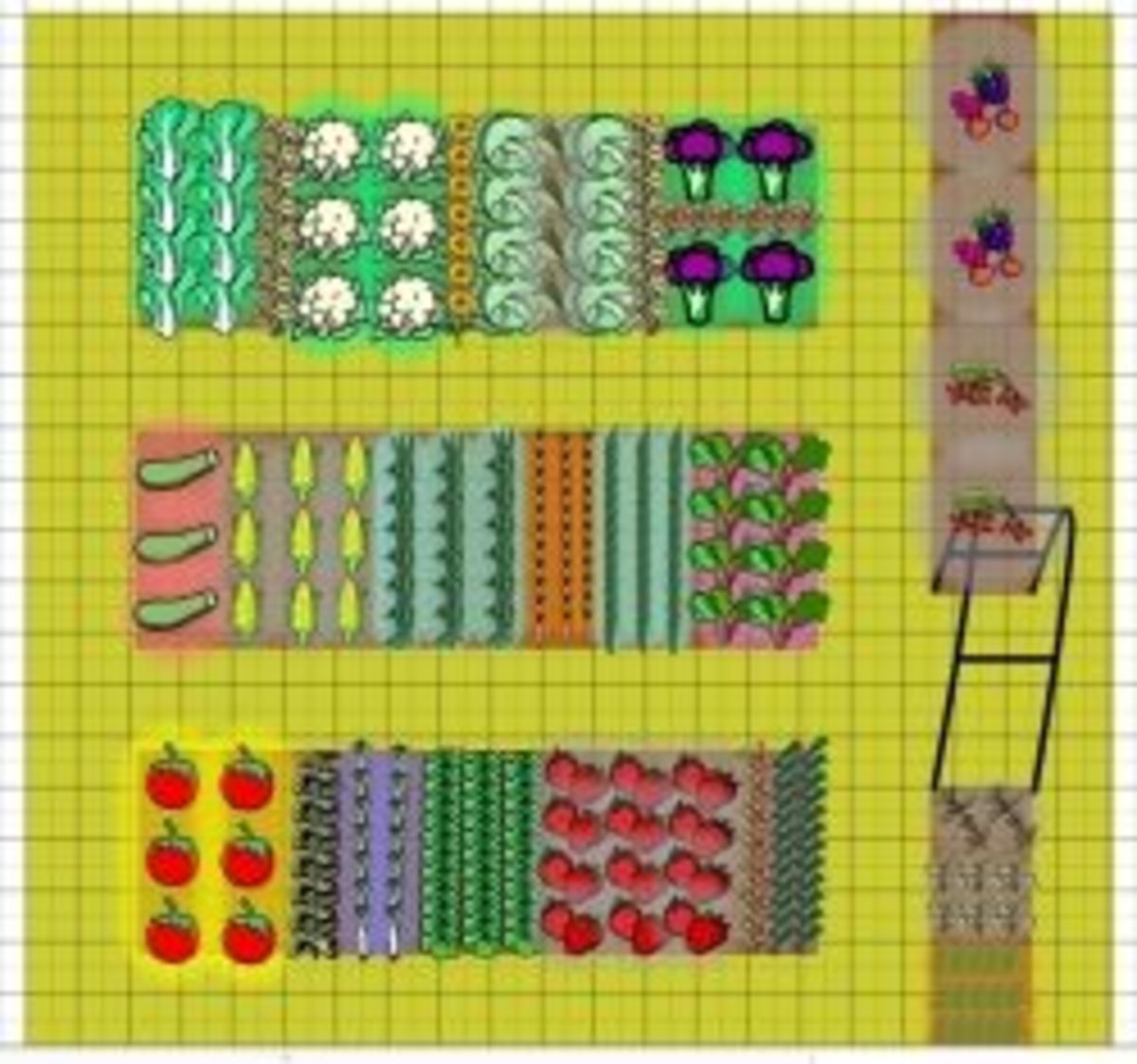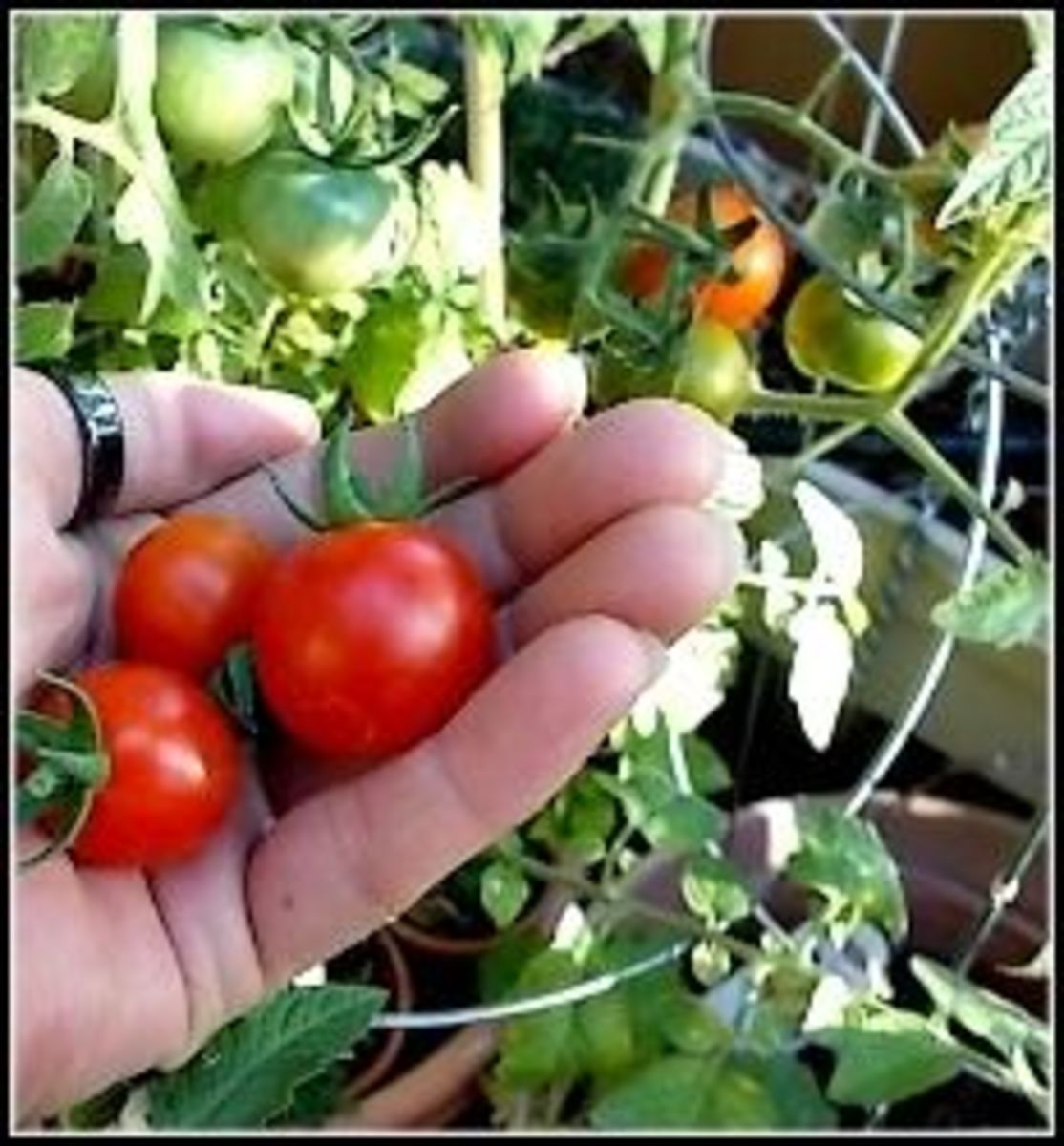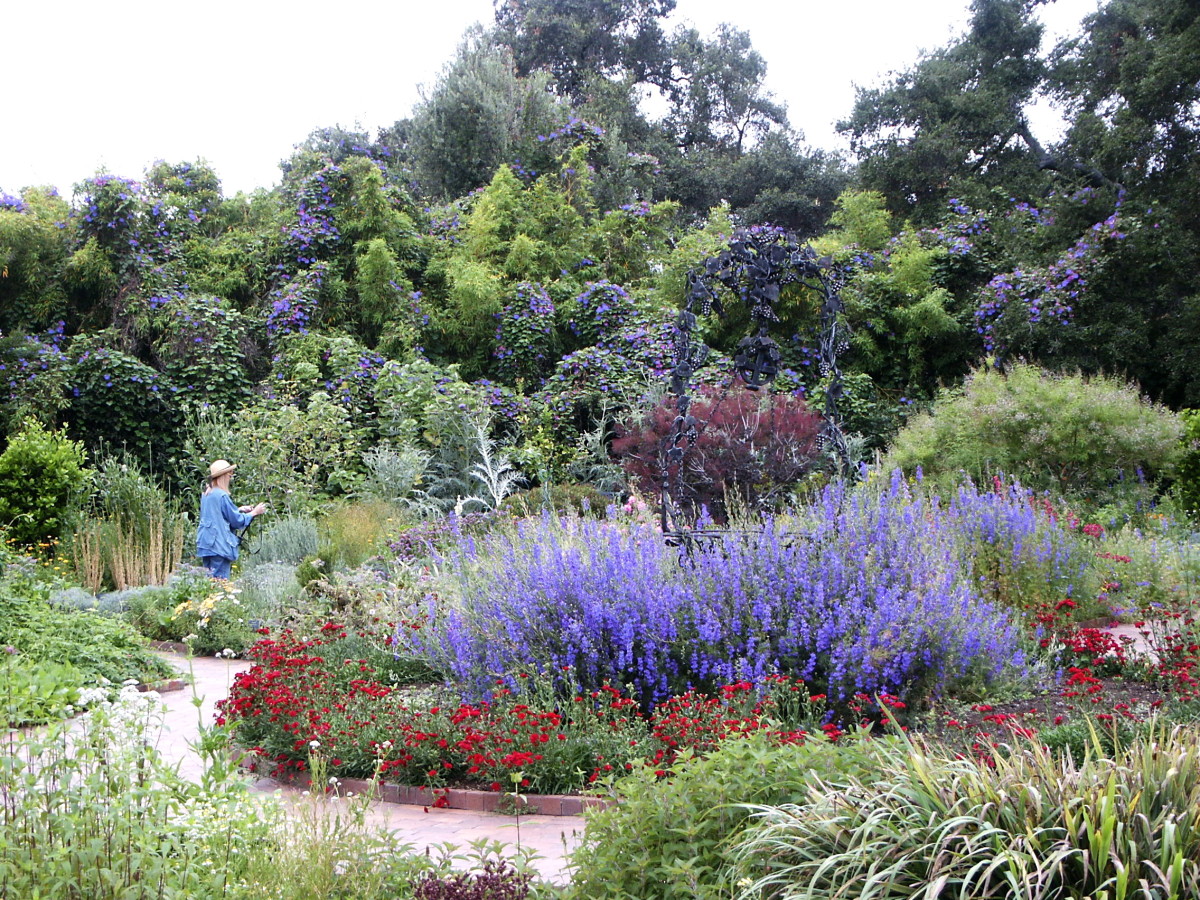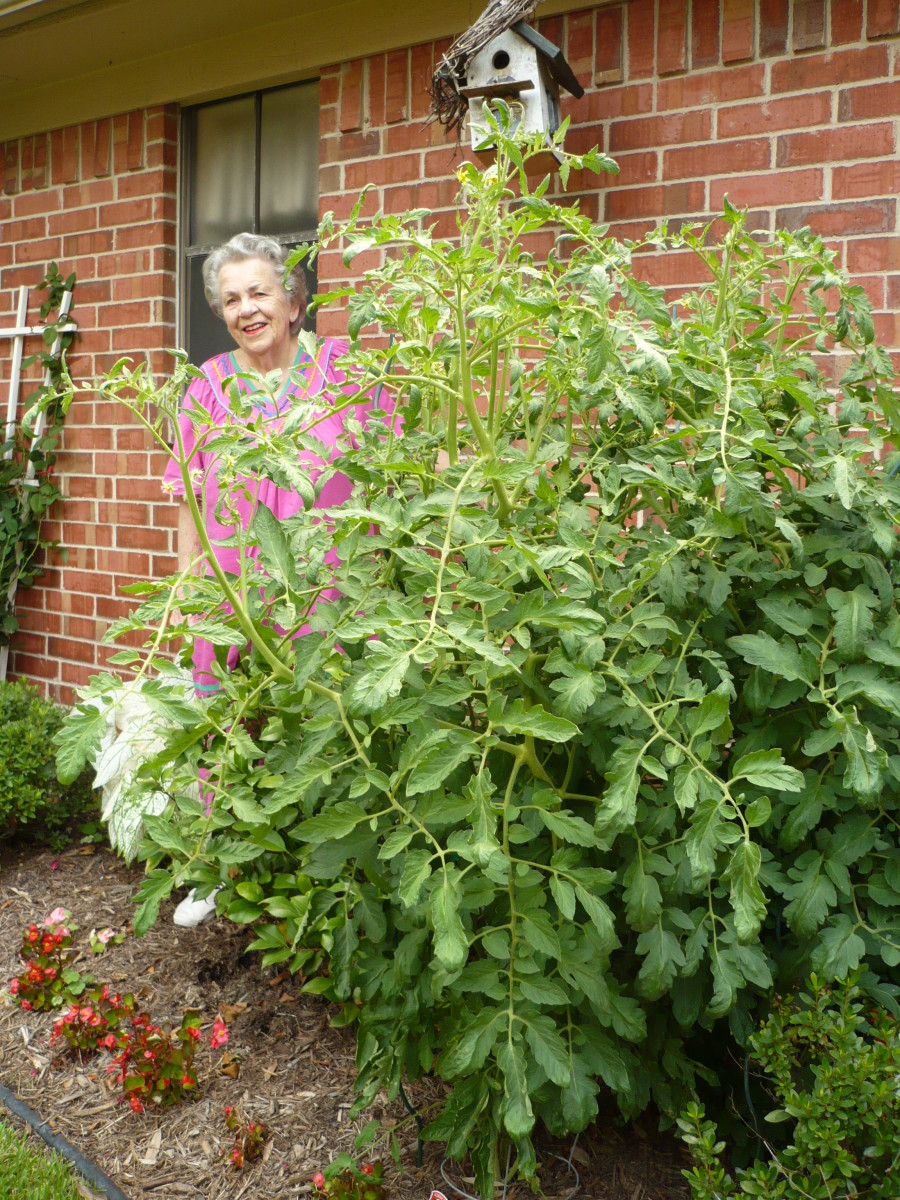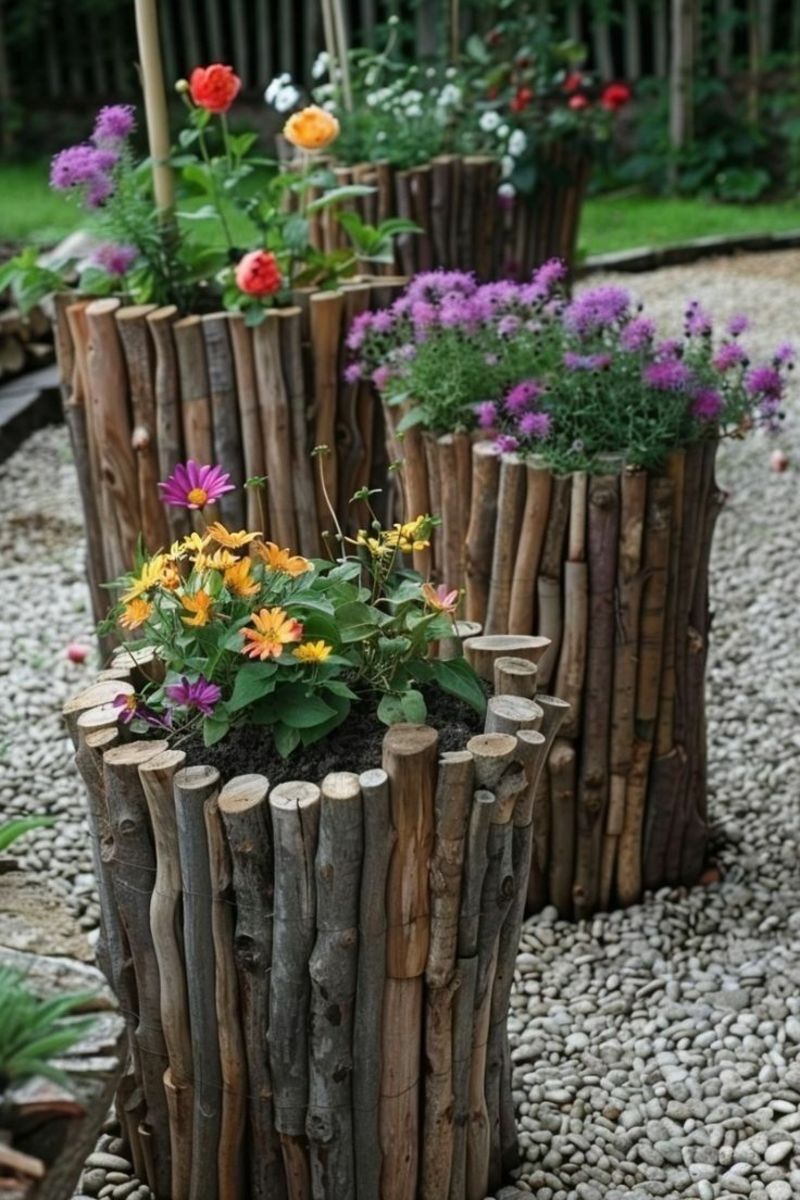Indoor Vegetable Gardening: Lighting for Beginners.

How I Chose Indoor Lighting for My Delicious Tomatoes
I recently started a vegetable container garden on my balcony. It was a total experiment and began from a desire to put the great light on my new balcony to good use. I am a country girl at heart and miss digging around in the dirt. Some of my experiments were successful out there on the balcony and some not-so-much. Slowly, I moved things indoors, to a kitchen window facing the same light as the balcony. There are many factors to a good kitchen garden (watering, containers, plant choice, plant stand, aesthetics, etc) but I think the most important factors are lighting and water. I will describe my lighting choices here. You will need to experiment in your own space, with your own lighting and plant choices. You will need to find what works for you. I have found what works for me as evidenced by eating ripe, juicy, and tasty tomatoes from my kitchen garden.
Image Credit: Images are mine and Dawn Rae -- All Rights Reserved (Click on photo for larger view)
Indoor Gardening
Would you like to grow your vegetables indoors?
Lighting Research
As my plants were doing their thing on the balcony, I knew that I’d want to move some of them indoors, and do my best to have successful plants over the winter. I knew I’d have to figure out lighting, since daylight hours are short in the winter here in Baltimore, Maryland. I began researching lighting for plant growth and indoor gardening.
I soon discovered that perhaps I should be careful doing this research at work since the most popular research results were about hydroponics and cannabis gardening. I don’t have anything against these things, per se, but I’m sure my very conservative work place wouldn’t like me reading weed articles on their dime. Even when researching at home, I couldn’t seem to find many informative articles about vegetables indoors. So research was a little slow.
Maybe, I was just the one weirdo in the world who wanted to grow tomatoes, cilantro, lemons, green beans, and squash in my kitchen. Maybe that was why it was hard to find articles specific to vegetables. I highly doubted that I was the only person who wanted to do this but maybe I was.
Over time, I learned that some colors of light are reportedly better for blooming (i.e. making the veggie blossoms pop out) and some types of light are better for sprouting plants. Some lighting stunts plants or makes them concentrate on growing bushier. By types of light, I’m referring to the color of the light spectrum that the bulb gives off: blue or red.
I also learned that “lumens’ is the strength of the light. The higher the lumen, the brighter the light.
Lighting Gadgets to Choose From
There are hundreds of light bulbs to choose from. From “Bulb” shaped bulbs to LED “bulbs” to fluorescent tubes. There are a large number of lamps and adjustable stands to choose from. From pricey adjustable stands to those little clamp on metal shades that hold only one bulb. I dream of owning a large, fluorescent, adjustable grow stand at some point in the future. Or, I dream of living in the country again with a windowed shed complete with adjustable lighting throughout. However, currently, I have to go as economical (read: CHEAP) as possible. I am also in a very small space. I don’t have room for large gadgets; no matter how much I’d like to have them.
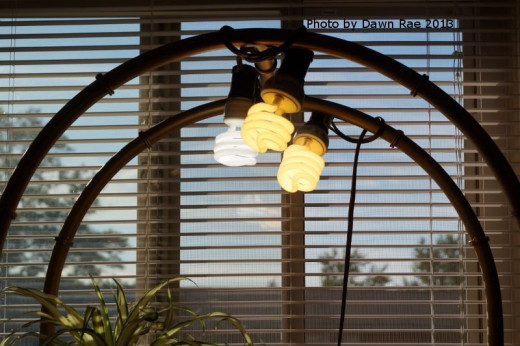
My Lighting Choice
I tend to start projects and give up quickly. So there’s no need to purchase an expensive, adjustable stand at this point. Maybe later as I become familiar with what plants prefer living in my kitchen garden.
Because I have just a few feet in front of one window to worry about, I don’t need many lights.
I don’t want to increase my electric bill. If my bill increases astronomical, those few vegetables aren’t going to be cost-effective. So I wanted something economical; both with the upfront cost and the electricity usage.
I wanted to try to blend in my lighting to the room as much as possible. I love vegetable plants, but as they go through their life cycles, there are points that they aren’t the most aesthetically pleasing thing in the room. I didn’t want to compound this by having ugly lighting. I had even considered a nice floor lamp for my bulbs. I just couldn’t figure out how to keep the lighting centered on the plants with a single floor lamp.
I ended up choosing a daylight spectrum bulb to combine with compact fluorescent bulbs I already owned. So I purchased the Ecosmart 75 watt equivalent, 1300 lumens, daylight bulb to encourage plant growth. I placed it in the middle of a three-socket cord I already had. The two bulbs I have on either side are soft white bulbs. (GE Helical 20w 120V 60 Hz) With the bulbs hanging in the string together, you can clearly see what the articles were speaking about when they talked about the different spectrums of light.
The package lists an estimated yearly cost of 2.29 based on 3 hours a day. I tend to be skeptical with what packages or studies show. But, I have not seen noticeable electricity usage increases outside of what would be increasing due to the colder weather. I’ll gladly pay and extra $2 to $3 a year for fresh tomatoes.
Light Bulbs on Amazon
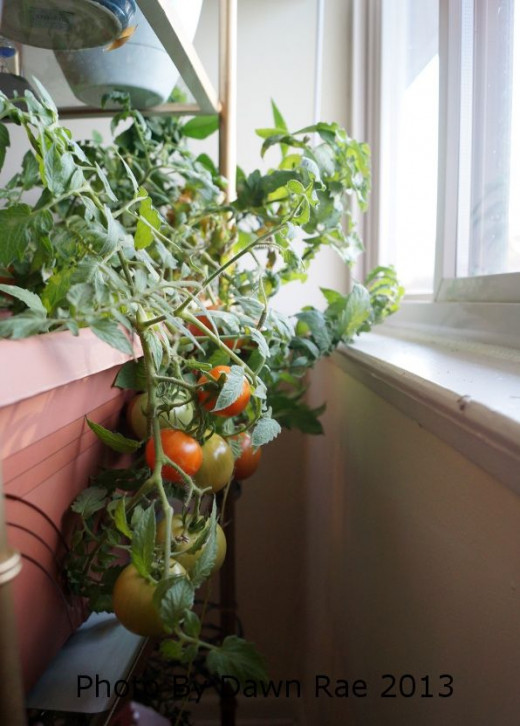
My Kitchen Garden Area
I was happy to be gifted a tall metal knick-knack shelving unit with glass shelves. It’s supposed to look like shiney brass. It is not. It’s been painted at some point in it’s life. It’s not the prettiest shelf, but it is functional and it’s not ugly. Because of the way it’s made, I gently wrapped the cord around the tops of the unit. I then wrapped the cord down one leg to help camouflage the excess cord.
The lights hang at the top. And the shelf sits right in front of the window so the plants get that bright natural lights when the blinds are open. You can see the ripening, juicy tomatoes hanging along the side. While this plant was outdoors, I "staked" it to the balcony rails and it stood upright. Inside, I placed it gently on the shelf and let the branches hang. I almost think the plant did better in this sprawling and hanging position.
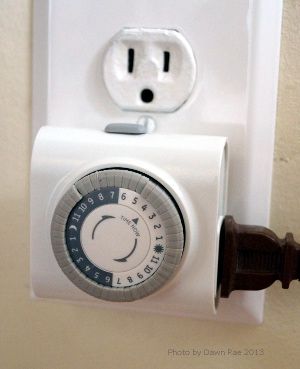
My Indoor Garden Routine
I purchased a timer for the string of lights. I am opening the window blind each morning before I leave for work. The plants have what natural sunlight comes through the windows. Then I have the timer set to turn the lights on from 5 pm to 10 pm. I chose those times in order to overlap with the natural light, and to continue until the time I’m often getting ready for bed. This way, I know my plants are getting 5 hours of bright, nourishing light in addition to whatever light mother nature decides to give during the day.
Indoor container gardens during cooler weather require more water due to the heating systems in our homes. I’m watching very closely and I am adjusting my watering habits. Currently, the tomato plant is full of ripening fruit and she’s in a very large container. I water her everyday. Not a completely soaking water since I don’t want her roots to get waterlogged. But a good dose of water every day. And every day, her dirt is dry to the touch. The other plants; lemon tree, pepper, and houseplants, get watered only every 2nd or 3rd day.
Lighting Timer
Finding an economical and easy to operate timer was far easier than I had expected. I have a hard time setting my digital thermostat so I thought a lamp timer would be challenging. It was not hard at all. And is very helpful in ensuring my plants get enough bright light to make them happy and productive.
I attempted to find a 3-socket cord to add to my products list, but I am only able to find single socket cords. They would work the same way, the difference would be more cords to secure and a power strip bar would become necessary if you only have one outlet in the area, like I do.
Helpful Links - There are plenty of helpful sites on the internet, if you take time to weed through them.
Ah haha, sorry, I couldn't resist that. But seriously, there are site that discuss the color spectrums, the pro and cons between different lighting, and a large variety of lighting/shelf combinations. Here are a couple that were helpful to me.
- the Urban Organic Gardener
This little article discusses indoor gardening lighting in a brief and easy-to-understand manner. - Earth Easy on LED Lights
A Pro LED page. But helpful information to explain LED lights, and some comparisons of LED, CFL, and Incandescent. - WikiHow
A short WikiHow entry on plants and grow lights.
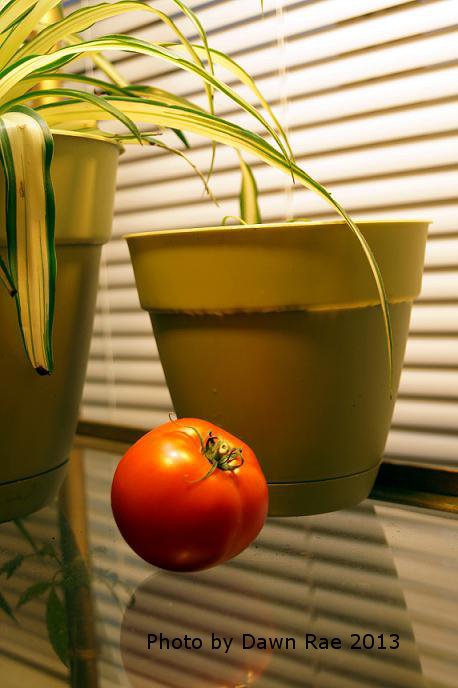
Summary
Bringing my tomatoes indoors wasn't as difficult as I expected. Neither was choosing a light that helps my plant continue to grow and produce fruit. My little kitchen garden does take a few minutes of attention almost daily, but it's worth it to eat ripe, delicious tomatoes that were grown in my home. If you would like to try an indoor vegetable garden, I encourage you to give it a try. You can try a few plants very inexpensively, and decide what you like.





